CHICKEN CUTS
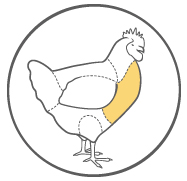


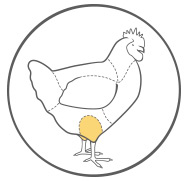
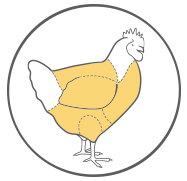

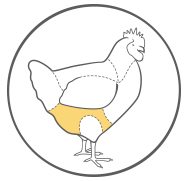

*WITH REFERENCE TO: 9PC + 8PC + QUARTERED + SPLIT
DESCRIPTIONS OF CUTS*
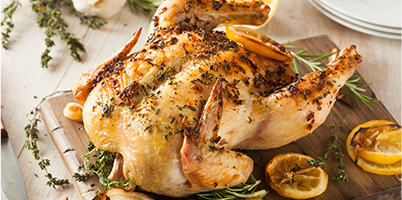
WHOLE CHICKEN (WOG)
A whole bird without giblets with all parts, including the breast, thighs, drumsticks, wings, back and abdominal fat.
QUARTERED WOG
A 4-piece is 2 breast quarters (half breast with back and wing attached) and 2 leg quarters (drumstick, thigh and back, all attached). The tail and abdominal fat may or may not be present.
8 PIECE
An 8-piece is 2 split breasts with back and rib portions, 2 drumsticks, 2 thighs with back portions and 2 wings.
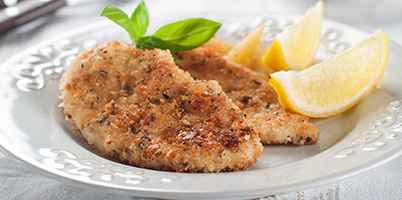
TENDERLOIN
A tenderloin is a whole-muscle product hand-pulled by separating the inner pectoral muscle from the breast and the sternum.
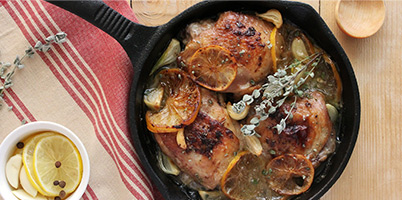
THIGH
A thigh is produced by cutting a whole leg at the joint between the tibia and the femur. The drumstick and patella are removed. The thigh consists of the thigh and associated fat. Meat adjacent to the ilium (oyster meat) may or may not be present.
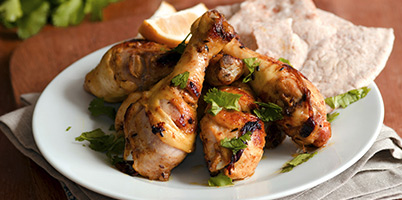
DRUMSTICK
A drumstick is produced by cutting a whole leg through the joint between the tibia and the femur. The thigh is removed. The drumstick consists of the drumstick and patella.

WHOLE WING
A whole wing is produced by cutting the wing from a whole bird without giblets at the joint between the humerus and the backbone. The wing consists of: the first segment, the second segment (flat) and the third segment (tip) containing the metacarpals and phalanges.
WING SECTIONS
The first wing section is described as the wing drumette. The second wing section is described as the wing portion. Wing sections are usually equal proportions of wing portions and drumettes.
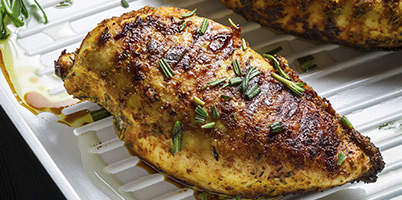
BREAST FILLET
The whole or half of the breast deboned.
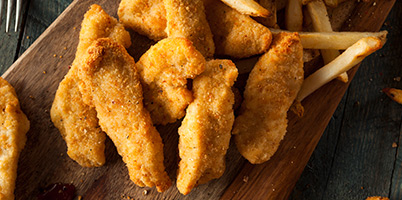
TENDERS
Also known as chicken fingers, chicken goujons, chicken strips or chicken fillets, tenders are chicken meat prepared from the pectoralis minor muscles. These strips of white meat are located on either side of the breastbone, under the breast meat (pectoralis major).

LEGS
Obtained by cutting at the natural seam through the hip joint (articulation between the femur and the pelvis). A leg includes the thigh and drumstick jointed or disjointed and may include pelvic meat. It excludes pelvic bones, back skin, abdominal skin and excessive fat.
PROCESSING POULTRY
We take great care with the processing of our poultry in order to ensure the quality, freshness, taste and safety of our products. All of our poultry is produced, processed and transported to the absolute highest standards.
PROCESSING OPTIONS
For foodservice, there are two types of processed chicken: commodity and value-added.
COMMODITY:
- Chicken sold as refrigerated, frozen or ice packed.
- Frozen commodity poultry can come in three different forms: Tray Pack, Individually Frozen (IF) or Individually Wrapped (IW).
- Ice packed poultry is a third option but is quickly diminishing in use, making way for more effective and efficient methods.
VALUE-ADDED:
- Chicken that has undergone additional processing to add value to the product prior to selling.
- Premarinated, trimmed, breaded or shaped chicken products are all examples of value-added chicken.
- It may come ready to cook (RTC) or fully cooked (FC).
USDA CLASSIFIED CHICKENS
The USDA classifies all processed chickens using one of seven different defined groups:
- Broiler – a chicken raised for its meat, as distinguished from a “layer,” which is a chicken that lays eggs for the table
- Roaster – 5 pounds or higher; less than 10 weeks of age, usually 55 to 60 days of age
- Capon – surgically de-sexed male broilers weighing 7 to 9 pounds and about 14 to 15 weeks of age; plump and tender; capons were once common but are now a specialty item
- Rock Cornish Hen – less than 30 days of age and about 2 pounds
- Rock Cornish Fryer – a small broiler-fryer weighing between 1 and 2 pounds
- Hen – female adult chicken
- Rooster – male adult chicken